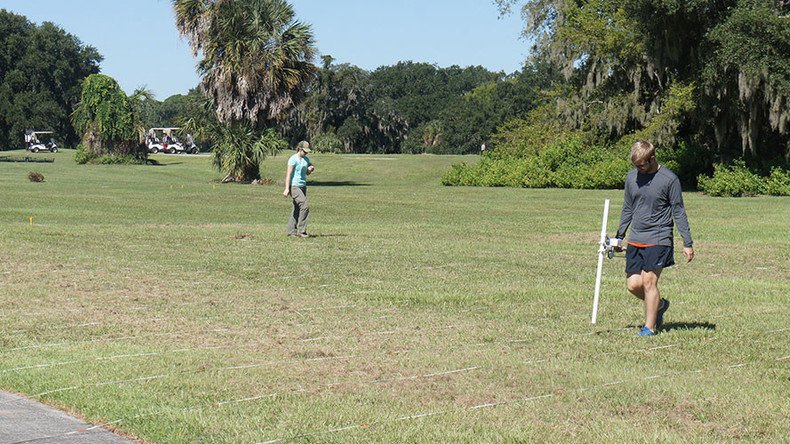Archaeologists discover 16th-century Spanish fort beneath South Carolina golf course

A centuries-old Spanish fort has been uncovered beneath a golf course on Parris Island off the coast of South Carolina, which was the site of the capital of Spanish Florida.
Tuesday’s announcement of the discovery of the fort, which was called San Marco, is the culmination of two years of research by Chester DePratter and Victor Thompson of the University of South Carolina and University of Georgia, respectively.
New artifacts suggest first humans colonized southeastern US 1,500yrs earlier than thought https://t.co/IEdt8o7Wkopic.twitter.com/dSM3HWBURY
— RT America (@RT_America) May 14, 2016
The fort was buried under a golf course at the Marine Corps Recruit Depot. It was discovered using radar and other ground-penetrating equipment. The archaeologists also used the technology to map out where buildings had stood in the larger settlement of Santa Elena, which at one point served as the capital of Spanish Florida.
DePratter and Thompson plan to publish details about their discovery in the Journal of Archeology Science Reports later this week.
Santa Elena was founded in 1566, and San Marcos was erected in 1577. While Santa Elena’s location has been known since 1979, DePratter has excavated at the site several times over the past 23 years in search of the fort.
“The trenches we dug in 1998 missed by about 20 feet [6 meters],” DePratter told the Guardian. “We never had an opportunity to figure out the layout of the whole town before. We’re hoping we can see an additional fort beyond what we’ve located, streets, buildings, wells that they’ve dug.”
Santa Elena was abandoned in 1567, when the Spanish crown decided to move its residents into the nearby fortress at St. Augustine, Florida to consolidate the population. The site was not inhabited again until soil had already buried the buildings that once stood there.
10mn-year-old baby: Youngest-ever exoplanet discovered, may hold key to planet formation https://t.co/aF9MM0vlkppic.twitter.com/g2xf9LFGsH
— RT America (@RT_America) June 21, 2016











